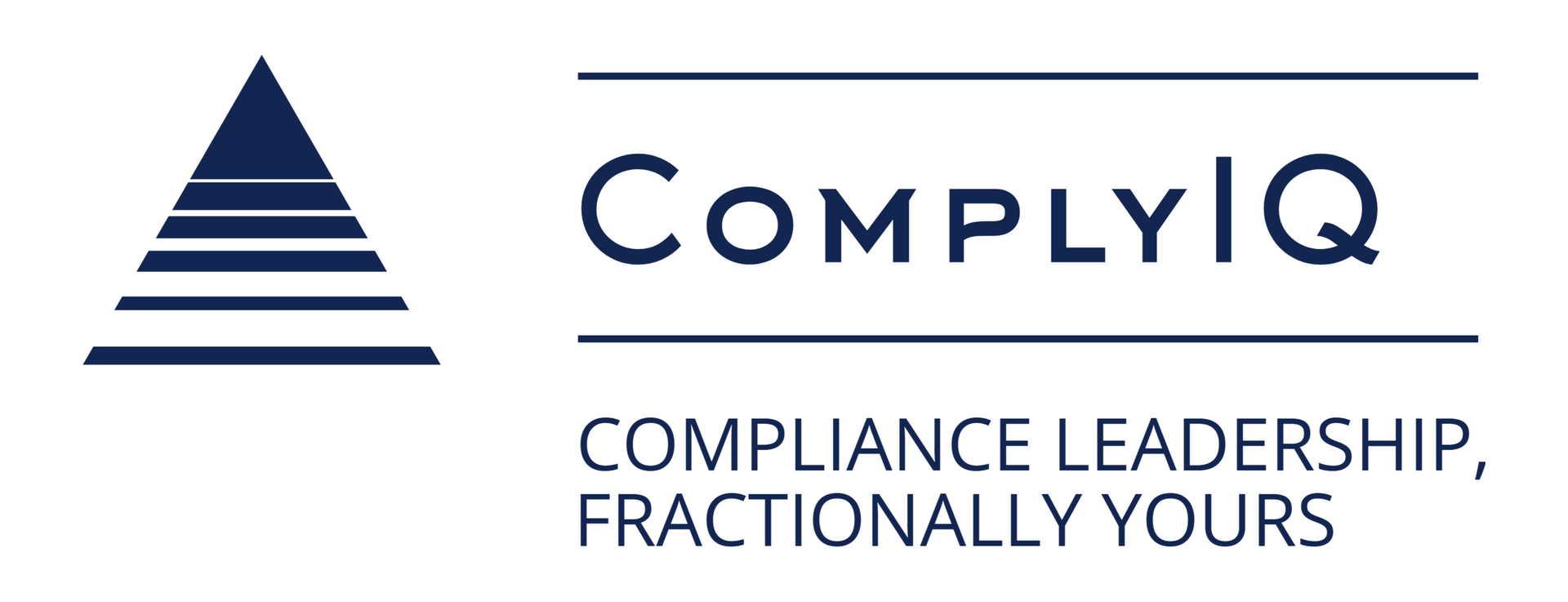AML Compliance in Cryptocurrency: 5-Step Exchange Guide
Learn how to build an exchange-ready AML Compliance in Cryptocurrency program with a five-step framework: risk assessment, policies, monitoring, licensing, and audit readiness.

Introduction — Why AML for Crypto Matters
Regulators are watching crypto.
AML compliance in cryptocurrency is now a business risk that stops product launches and costs money. Recent enforcement and guidance from FinCEN and FATF mean exchanges must show a defensible AML program or face fines, license delays, and forced product holds.
This guide gives a five-step, practical approach to build an AML program for exchanges: risk assessment, policies and governance, monitoring and reporting, licensing and regulator engagement, and audit readiness. Each step includes short checklists, concrete examples, and tools you can act on this month.
Quick wins (30 days)
- Run a one-page risk heat map for your highest-volume product.
- Export 90 days of on-ramp transactions for token X and spot anomalies.
- Pilot one blockchain analytics vendor on a single token.
Step 1: Conduct a Crypto-Specific Risk Assessment
A focused risk assessment tells you where to spend limited compliance hours. It gives examiners a defensible rationale for thresholds and controls.
Checklist:
- Map major threat vectors by product.
- Score customer segments and transaction patterns.
- Prioritize high/medium/low risks and document tolerances.
Identify major crypto threat vectors
Think of threat vectors as the highways money travels. Mixers, privacy coins, cross-border transfers, peer-to-peer trades, and OTC desks are the main routes that need monitoring.
FinCEN guidance on virtual currencies clarifies how BSA rules apply to convertible virtual currencies. Use it as your baseline when you explain program scope to auditors. FATF guidance for virtual assets typologies help you spot global patterns and travel-rule expectations.
Example: For spot trading, your chief risks are fiat on/off ramps and wash trading. For custody, the risk shifts to private key compromise and unauthorized withdrawals. Map these differences visually — a simple table helps.
Practical step: create a 2x2 heat map with likelihood on one axis and impact on the other. Put mixers and unvetted on-ramps in the high/high quadrant first.
Profile customers and transaction patterns
Segment customers into retail, institutional, high-net-worth, OTC desks, and market makers. Give each segment a starting risk score. Then refine using behavior: frequent large withdrawals, repeated on/off ramps, or quick routing through mixer clusters should raise the score.
Flag transaction patterns: rapid on/off ramps, layering across tokens, small repeated deposits followed by a single large withdrawal. Use sample thresholds as starting points — for example, flag unverified users with cumulative on-ramps > $25,000 in 24 hours. Adjust after a two-week pilot.
Use analytics vendors to turn these patterns into measurable signals. Chainalysis, Elliptic, and TRM Labs provide address clustering and risk scoring for exchanges. Pilot one tool on one token before broad rollout.
Mini-case (hypothetical): you detect a user who on-ramps $30k via a third-party on-ramp, immediately sends funds to five new addresses, then routes to a known mixer. That user moves to high-risk and triggers an immediate hold for enhanced due diligence.
Prioritize risks and set tolerances
Rank each identified risk as high/medium/low. Allocate monitoring effort: real-time alerts on high, daily reviews on medium, and weekly sampling on low. Document your risk tolerances in a Risk Assessment memo for the board. Pull 2–3 external benchmarks — FATF peer reviews or Cambridge CCAF crypto regulatory study — to justify thresholds. Examiners expect to see this evidence.
Pro tip: write a short rationale for every high-risk decision. Keep it under 150 words. This memo is gold during exams.
Step 2: Design Policies, Procedures and Governance
Translate the risk map into policies and clear roles. Policies must be practical, auditable, and tied to system controls.
Checklist:
- Create an AML policy suite with operational appendices.
- Map roles, SLAs and escalation paths.
- Define KYC tiers and EDD triggers.
Build an AML policy suite
Write these core documents: AML Program, KYC/Customer Due Diligence, Sanctions Screening, Transaction Monitoring, SAR Filing, Recordkeeping, and Training. Use the FINCEN government checklists to ensure you cover mandatory elements.
Keep each policy short and action-focused. Start each document with one sentence that explains why it exists. Then list responsibilities and escalation triggers as bullet points. Attach implementation appendices that map policy to API endpoints, data fields, and workflow owners.
If drafting is a blocker, adapt prebuilt templates and tailor them.
Define roles, governance and escalation
Assign clear owners.
Example role map:
- Compliance Lead (CCO/BSA officer): policy owner, regulator contact.
- Investigations Analyst: triage alerts, prepare SARs.
- Frontline Ops: perform KYC, apply holds.
- Product Owner: fix technical flags and provide evidence.
Set SLAs: triage within 24 hours, EDD within 72 hours, escalate to the CCO within 48 hours for high-risk matters. Hold weekly ops syncs during launch and monthly risk reviews with execs.
Use DOJ guidance on evaluating compliance programs when documenting governance to show examiners your design and testing approach.
Practical note: expect pushback from product on strict SLAs during launch. Capture that in meeting minutes and include a short operational workaround in the policy appendix.
Implement KYC and enhanced due diligence tiers
Define KYC tiers and their evidence:
- Basic: email + phone.
- Standard: government ID + selfie.
- Verified: ownership docs + proof-of-funds.
EDD triggers: PEPs, large OTC trades, cross-border settlement, and links to known illicit addresses.
Sample EDD checklist: transaction history, bank statements, chain provenance, beneficiary interviews. Automate KYC checks via vendors that provide APIs and webhook callbacks. Capture structured metadata to feed into TM rules.
Training: run tabletop exercises quarterly and require investigators to complete focused crypto training like the ACAMS cryptoasset certificate.
Step 3: Monitoring, Detection and Reporting
Monitoring is active defense. It must detect real threats while keeping false positives manageable.
Checklist:
- Choose TM systems that fit your use case.
- Translate risks into rules and test them.
- Build investigations templates and SAR workflows.
Deploy transaction monitoring and detection systems
Pick systems based on: real-time vs batch needs, blockchain analytics integration, case management, and tuning capabilities. Pilot one analytics provider per product line and compare false-positive rates over 30 days. Translate risk scenarios into rules.
Example rules:
- Rapid withdrawal to new addresses within 2 hours after large on-ramp.
- Inbound from known mixer clusters followed by split-out sends.
- Multiple small deposits followed by a single large off-chain transfer.
Backtest rules against historical data. Backtesting cadence: monthly during launch, quarterly after stabilization. Use best practices to shape testing and KPIs.
Analogy: think of transaction monitoring rules like smoke detectors. If they’re too sensitive, analysts drown in alerts. If they’re too dull, you miss fires. Tune them to find the balance.
Use comparative reviews when picking vendors so you know strengths and limits before you commit.
Investigations workflow and filing SARs
Design a simple, repeatable process: triage → case creation → evidence collection → decision → file or close. Use templates to capture link analysis, chain provenance, and decision rationale. Keep a one-page case brief for every SAR. That brief should state why the threshold was met, what evidence you gathered, and which rules you used. This fits examiner expectations and speeds internal reviews.
Document retention must be exam-ready. FinCEN SAR supporting-documentation guidance explains what examiners want when they request supporting documents. Use the FinCEN BSA E-Filing portal to submit SARs.
Practical tip: store a redacted example SAR and its one-page brief in a ready folder for exam requests.
Reporting, metrics and dashboards
Track KPIs: alerts/day, time-to-triage, case closure time, false positive rate, SARs filed, and escalations. Present these monthly to execs and quarterly to the board.
Make dashboards actionable. Show top tokens, top counterparties, and geographic slices. Compliance can take ownership of these reports and lead regulator-facing narrative during exams. They can shorten time-to-compliance, provide on-demand regulator engagement during examinations, and keep licensing and multi-jurisdictional AML controls current. This is useful when your internal team lacks senior examiner experience.
Step 4: Licensing, Sanctions Screening and Regulator Engagement
Licensing and sanctions compliance are operational requirements. Be proactive here — waiting until expansion causes big rework will cost time and money.
Checklist:
- Build a state and federal licensing roadmap.
- Layer sanctions screening, including blockchain address lists.
- Prepare a regulator engagement playbook and run mock exams.
Map the licensing landscape and plan
Compile federal and state requirements: MSB registration, money transmitter licenses, and any state crypto-specific regimes. Use NMLS licensing resources as the starting point for state money transmitter portals.
Create a 50-state roadmap with timelines and cost bands. Typical state licensing takes 3–12 months. Include bonding and reserve requirements in your plan. Prioritize states that drive the majority of your revenue.
Sample planning table (short):
- State A: 4–6 months, moderate fees, bonding required.
- State B: 8–12 months, high fees, local agent required.
Document your expansion rationale for exam evidence.
Practical note: if your team must choose between speed and coverage, start with a smaller state set and add territories as you harden controls.
Build layered sanctions and OFAC screening
Screen names, addresses, fiat counterparties, and crypto addresses. Subscribe to OFAC feeds and use address-dataset updates. Automate retroactive screening every quarter for high-value accounts.
Test your screening using real-world simulations. Confirm you can produce hit reports quickly. Use OFAC Sanctions List Services for program guidance.
Prepare a regulator engagement playbook
Create ready-to-send document packages for common examiner requests: risk assessment memo, policy suite, 90-day dashboard, and sample SARs (redacted). Include point people and response SLAs.
Run mock exams and Q&A drills with product owners. Use CFPB exam guidance to anticipate common document requests.
Dialogue example to rehearse internally:
- Examiner: "Show the rationale for your thresholds."
- CCO: "We used FATF benchmarks, backtested rules for 90 days, and documented board approval."
If you prefer to outsource response coordination, vendor-led prep can compress timelines.
Step 5: Audit Readiness and Ongoing Maintenance
Make audits routine. That turns surprises into predictable fixes.
Checklist:
- Annual external audit and quarterly internal control testing.
- Sample CDD and TM rule effectiveness reviews.
- Regulatory watch process and policy updates after launches.
Schedule an annual external review and quarterly internal tests. Tests should include control walkthroughs, sample file reviews for CDD, and TM rule backtesting. Focus samples on high-risk accounts and rules that produce the most alerts.
Maintain a regulatory watch for FinCEN, OFAC, state regulators and FATF. Update policies and risk assessments after major launches or rule changes.
Pro tip: keep an evidence binder (digital) indexed by topic: policies, risk memo, test results, SAR templates, and board minutes. “Virtual-currency businesses are not exempt from the BSA.” — FinCEN
Conclusion — Key Takeaways and Next Steps
Start with a focused risk assessment and pilot monitoring on one product line. That gives you quick, defensible evidence for exams and reduces launch risk.
Within 30 days: map your highest-risk vectors, export 90 days of transactions for review, and pilot one analytics vendor.
Takeaway: structured steps and ready evidence turn reactive holds into predictable releases.
FAQs
What are the core AML program components for a crypto exchange? Risk Assessment, Written Policies, KYC/EDD, Transaction Monitoring, Investigations & SARs, Sanctions Screening, Training, and Audit-ready Documentation.
How do I choose transaction monitoring rules for on-chain vs off-chain flows? Use a hybrid approach: blockchain analytics for on-chain provenance and fiat-rail correlation for off-chain flows. Pair token-specific velocity rules with fiat thresholds and identity metadata.
When do I need a money transmitter license vs MSB registration? MSB registration is a federal BSA requirement. State money transmitter licenses depend on custody and the transmission of fiat or crypto. Check state guidance and NMLS for details.
How often should AML controls be tuned? Tune monthly during product launch, quarterly once stable, and immediately after any product change or security incident.
What vendors are recommended for blockchain analytics and KYC? Blockchain analytics: Chainalysis, Elliptic, TRM. KYC vendors: Onfido, Jumio. Pilot two vendors before committing.
How do I document decisions to survive an exam? Keep investigation logs, a written risk assessment memo, policy revision history, board minutes, TM backtesting records, and SAR supporting documentation indexed and ready. Follow FinCEN guidance on SAR documentation.










